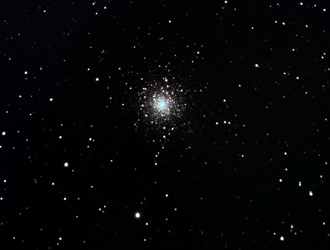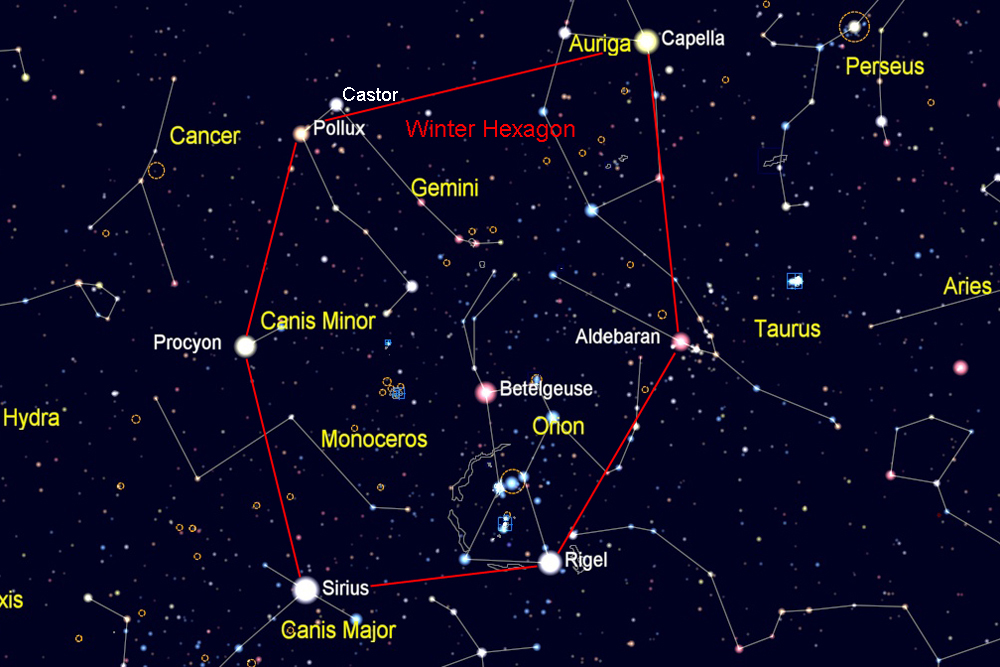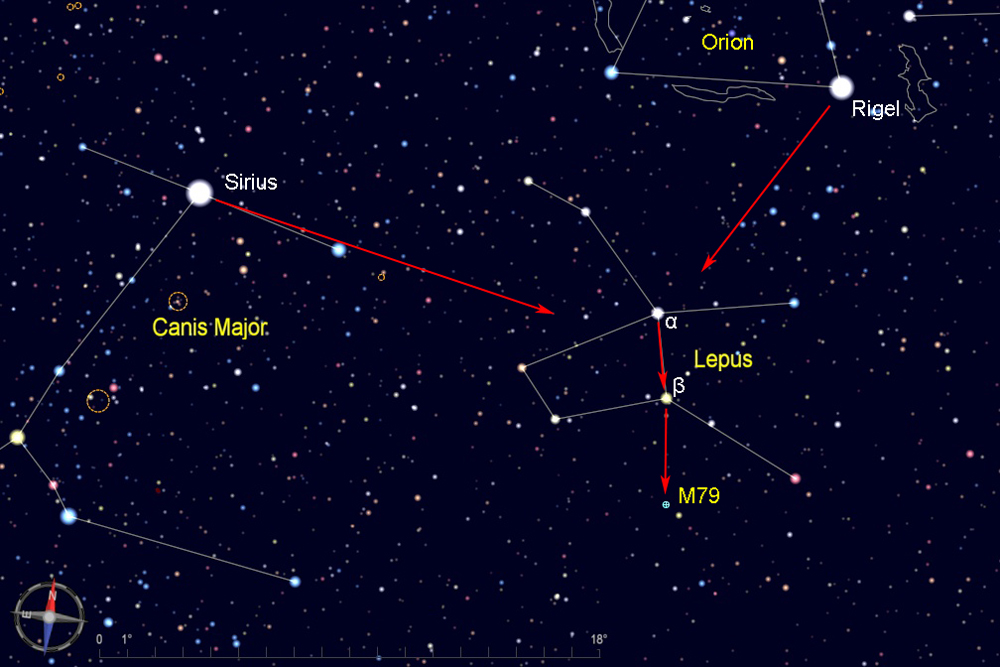
Find the Winter Hexagon, which is composed of six of the brightest stars in the sky--Sirius, Procyon, Pollux, Capella, Aldebaran, and Rigel. On mid-winter evenings, these stars form a large oval stretching from low in the south to nearly overhead. As spring begins, the Winter Hexagon sinks toward the west. The constellation Orion and its bright red star Betelgeuse are inside the Hexagon.
For this star hop, find Sirius and Rigel.

Look west of Sirius and south of Rigel to find the constellation Lepus, the hare. On a clear winter night, the stars of Lepus are easy to see as long as the constellation is above the horizon. Use the two brightest stars of Lepus, α and β, to point to the location of M79. Extend a line between α and β to the south, about the same distance as the separation between these two stars, to reach M79.
 .
.